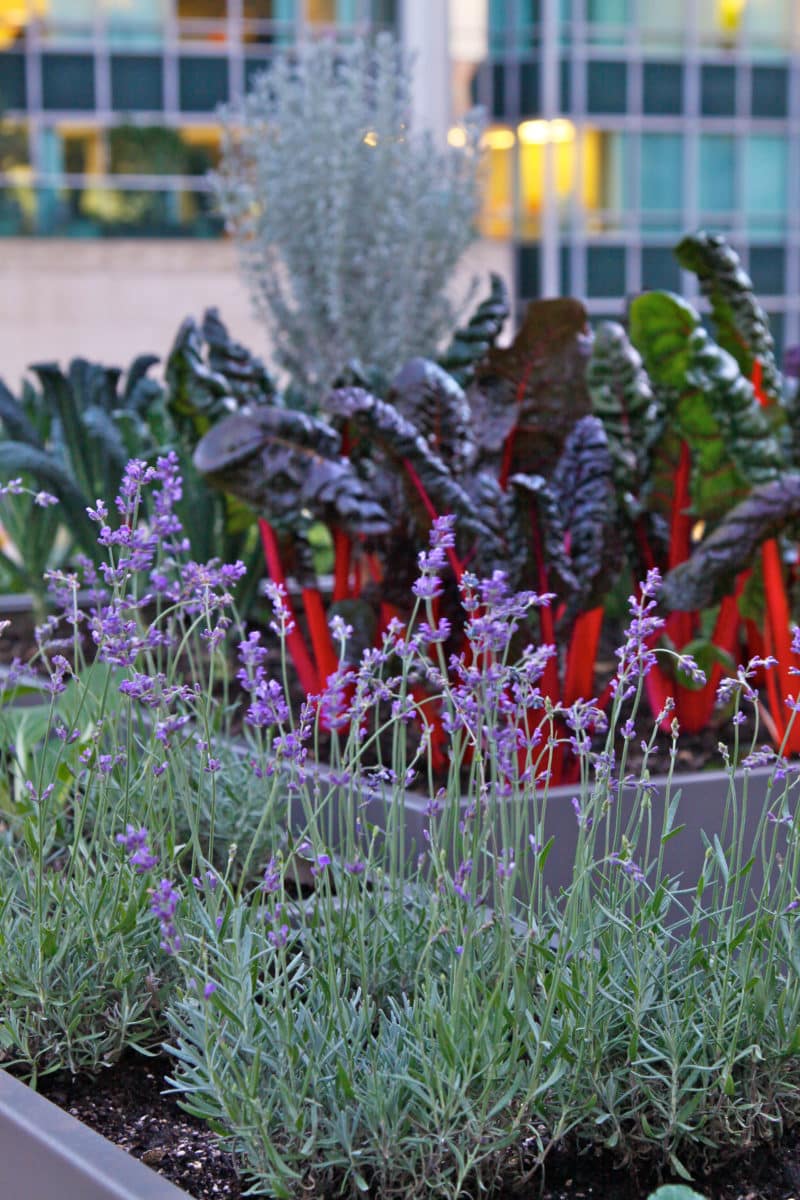At a time when farm-to-table is the norm in fine dining, the idea of a restaurant garden is every chef’s dream. But what happens when that restaurant is located in the heart of an urban space? Just how local is local food on the menu, really? In the case of the Vancouver Club in Vancouver, British Columbia, local is just steps away. And up.
The Vancouver Club (VC) is a members-only gathering place for executives, creatives, and others to escape the bustle of urban traffic and noise. Housed in a five-story, turn-of-the-20th- century building designated “Class A Heritage” by the city, the club is both elegant and informal. The rooms and facilities are designed for members to dine, play, relax and connect with professionals “who are shaping the fabric and creative energy of this cosmopolitan Canadian city,” say club executives. Prior to 2012, however, there was one space of the club that wasn’t utilized – the rooftop.
“Here’s what occurred to us,” said Phillip Ireland, general manager of the Vancouver Club. “Let’s take a space that is not being utilized (the rooftop) and let’s provide an exciting place for our chef and team to grow their own herbs, where guests can see that we actually grow and pay attention to the food we serve them.” Sounds easy enough, but rooftop gardens – particularly those in busy urban areas – present unique challenges in terms of plant choices, growing conditions, and – of vital interest to the VC — aesthetic.
Enter Todd Holloway, garden designer and owner of Vancouver-based Pot Incorporated. A self-described plant fanatic, Holloway began his career in his late teens with an intense urge to grow food. He formally educated himself in sustainable food production at Capilano University and the Center for Agroecology & Sustainable Food Systems at the University of California in Santa Cruz. After twenty years of work in container and garden design, Holloway was approached by Ireland about the VC proposal while working on Ireland’s own property.

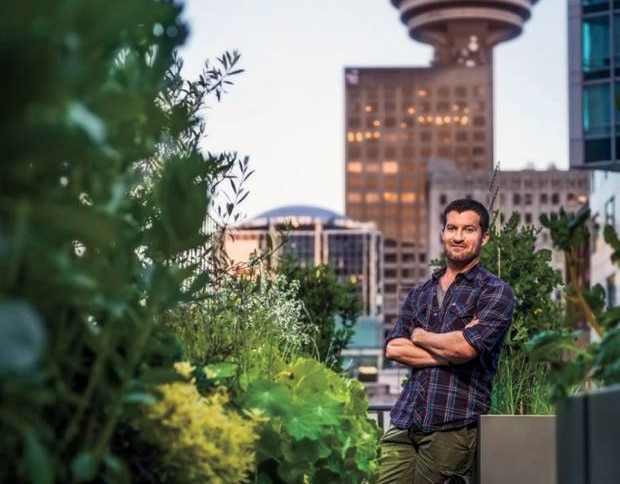
Ireland assembled a team that included architect David Hepworth of Situ Design, Holloway, and executive chef Sean Cousins. While Hepworth designed the overall space, Holloway designed the gardens.
“A common issue for many vegetable gardens is they are grown primarily for production with little thought given to the overall design of the space,” Holloway noted. “This leaves them looking messy, or worse, unsightly. That was not an option for the Vancouver Club.”
Indeed, the garden has clean, modern lines. The planters, designed by Hepworth and Holloway, are a series of 55 rectangular raised beds in varying shapes made of powder-coated steel. Each is the same height. Four blocks of planters in the center of the roof are framed by wooden, built-in benches. Pathways along straight lines encourage strolling, noted Holloway. “Straight lines make the garden seem more accessible because there is a clear journey through the space. You can also see from one end to the other from virtually any angle.”
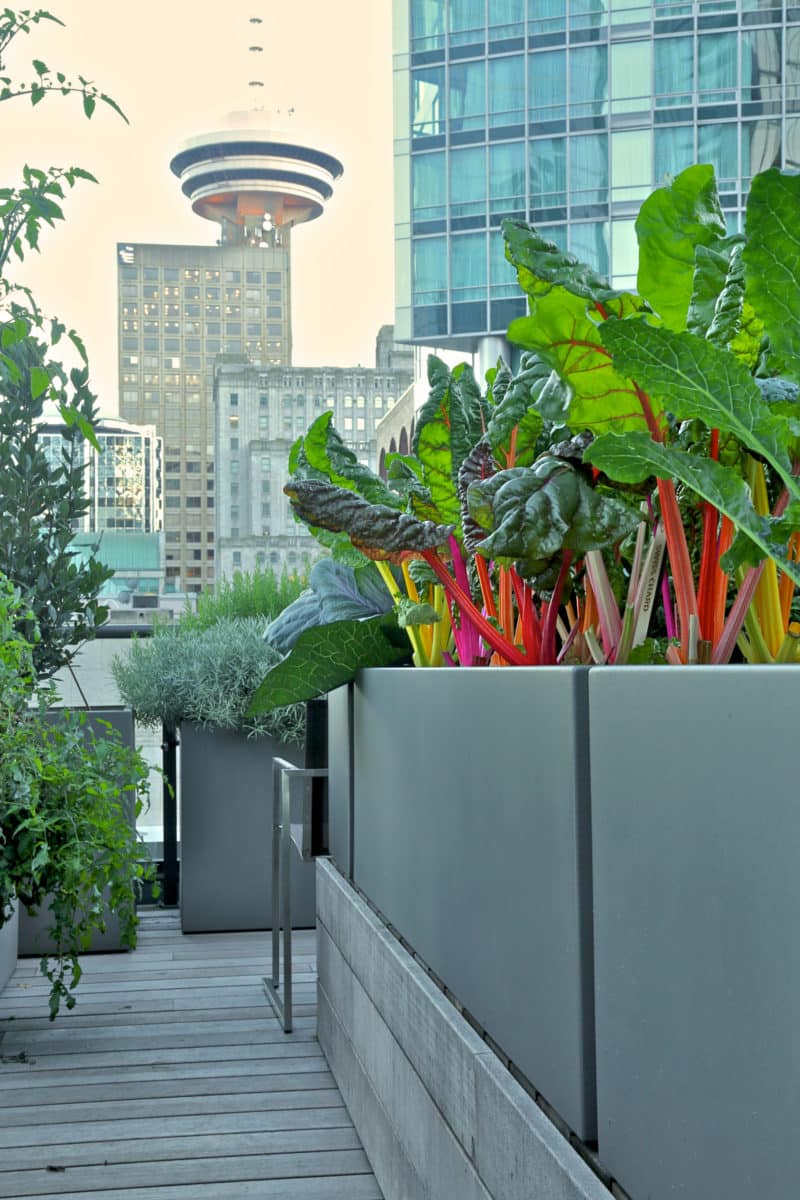


Seeing through the gardens was important to the planners because the VC is tucked among skyscrapers in the business district and has a spectacular view of the harbor. Not only was it important that the planters not impede the view, the plant design itself had to complement the surroundings. For Holloway, that meant the careful placement of plants that have a tendency to grow up or sprawl – not an easy thing to do with some naturally unruly edibles.
He kept the plantings in the center beds low and placed tall vining vegetables such as indeterminate tomatoes along the perimeter of the garden, creating the illusion of a living wall. “The only exception is a teepee of beans I planted in the middle of the garden as a focal point,” Holloway noted. “Otherwise the garden would be flat and uninteresting.”
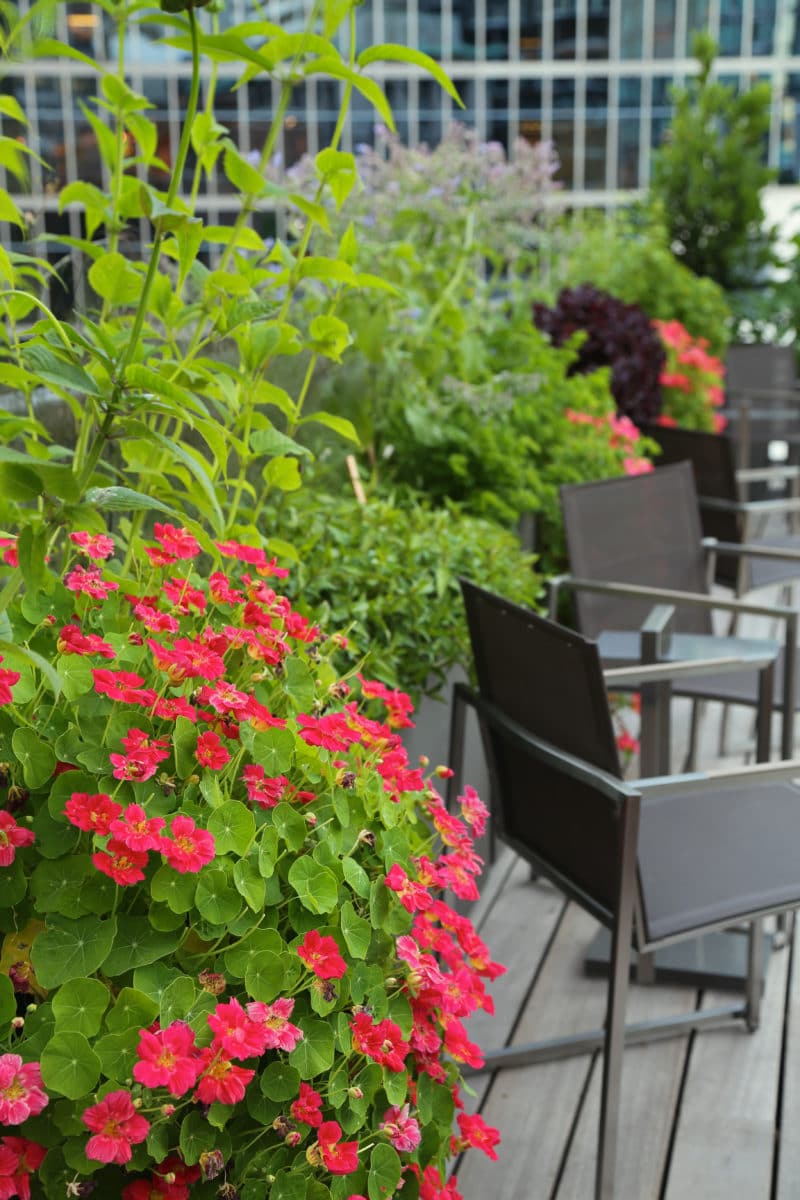
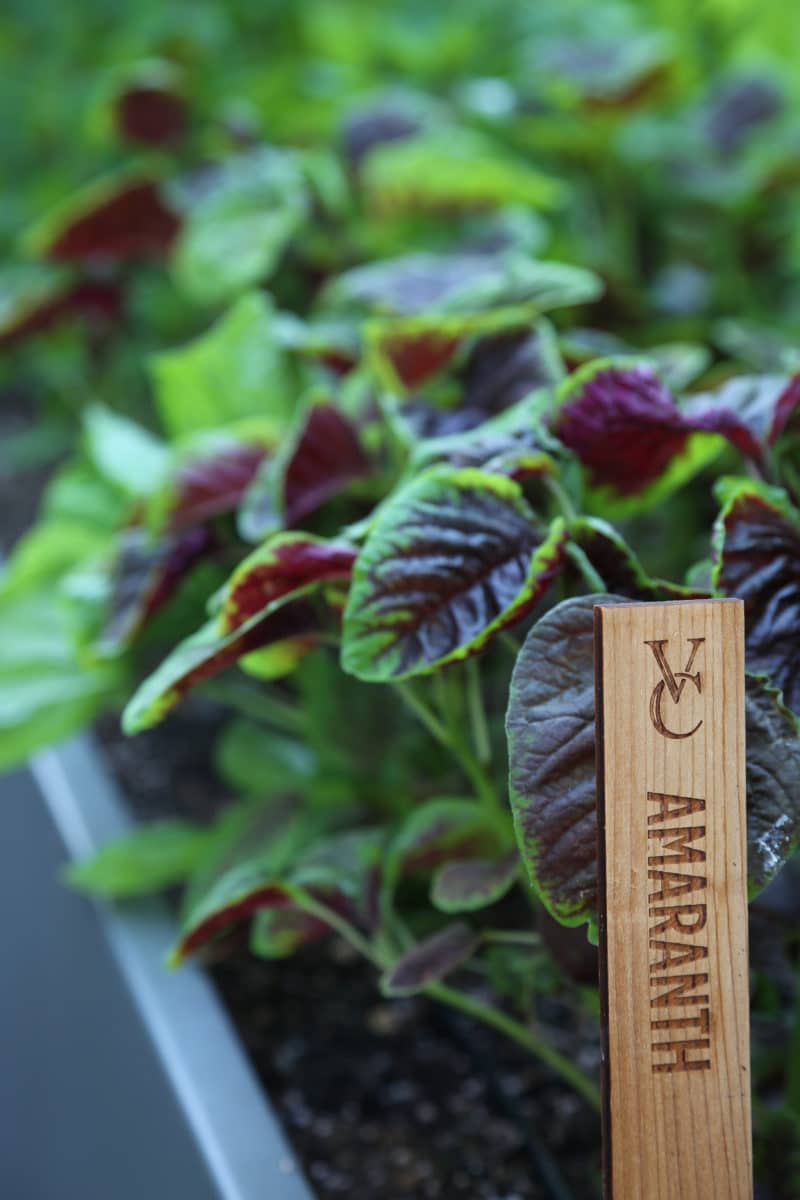

This rooftop garden is anything but flat and uninteresting. Holloway works closely with Cousins to keep the plant palette exciting. Heirloom dwarf blue curled kale (Brassica oleracea ‘Dwarf Blue Curled’) and lingonberry (Vaccinium vitis-idaea) are just two examples; staples include ‘Bright Lights’ Swiss chard (Beta vulgaris ‘Bright Lights’), eggplant, radishes, onions, chilies and nearly every herb imaginable. In addition to tomatoes, the vessels along the sides and in the corners of the rooftop house trees with edible fruit, including European olive (Olea europea), laurel (Laurus nobilis), as well as flowering perennials, annuals, and native plants that encourage pollination.


Texture, shape, and color – factors that are important in traditional garden design – are of paramount importance to Holloway in the beds. The garden is used regularly now by members and guests for events during warmer months. Chef Cousins and his team pick from the beds daily and Holloway ensures there is always a fresh, beautiful crop at hand. From the contemporary lines and comfortable seating to the selection of plants, the rooftop garden invites Vancouver Club guests to enjoy the outdoors without ever leaving the building. ![]()
First published June 2016
